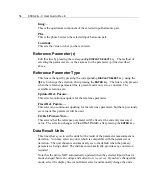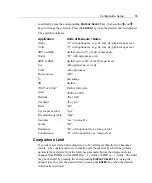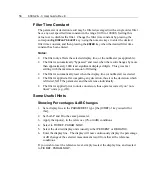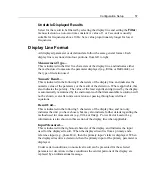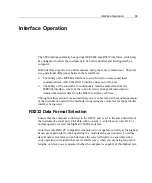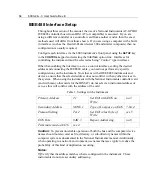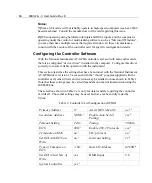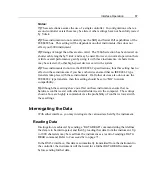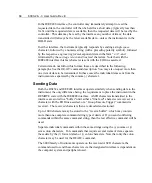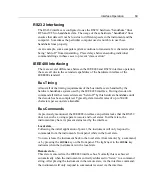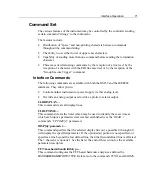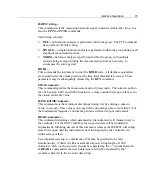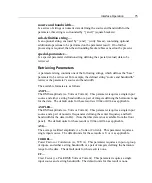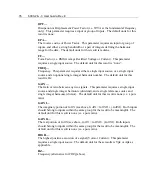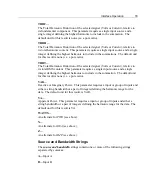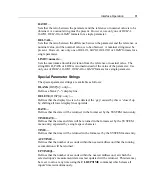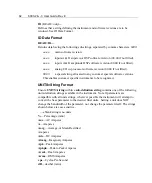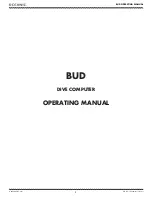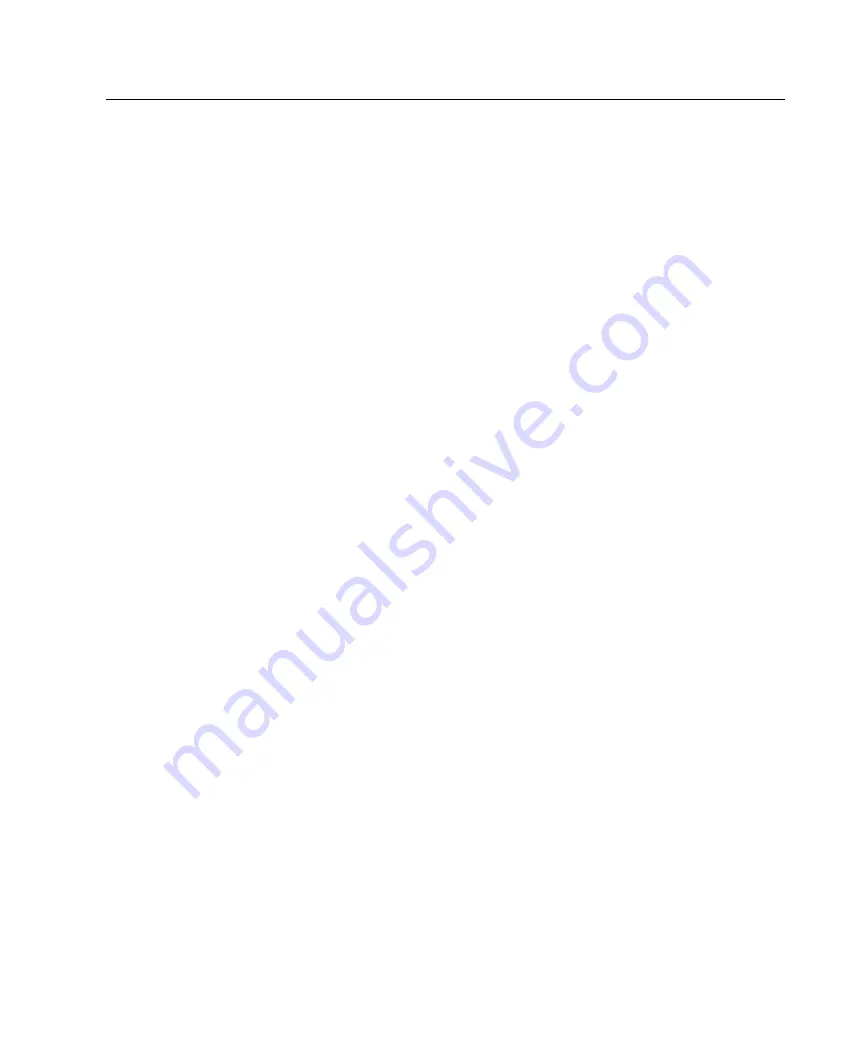
68
6000-2 & -3 User Guide, Rev E
In the IEEE488 interface, the controller may immediately attempt to read the
requested data, the controller will then be held for a short delay (typically less than
1mS) until the requested data is available, then the requested data will be read by the
controller. This data may be read by the interface any number of times; the data
transmitted will always be the latest available data—unless the instrument is in the
HOLD state.
In either interface, the instrument typically responds by sending a single
space
character, followed by a numeric string (with a preceding polarity symbol), followed
by the respective
engineering format
exponent data in the form “
e+3
”, and
terminated by the
carriage return
and
line feed
characters. Note that with the
IEEE488 interface this last character is sent with the EOI line asserted.
Certain data do not follow this format, these are described in the following
paragraphs. See the
READ
=
command description. You may also request more than
one item of data to be transmitted. In these cases the individual items sent from the
instrument are separated by the comma (
,
) character.
Sending Data
Both the RS232 and IEEE488 interfaces operate similarly when sending data to the
instrument, the only difference being, the requirement to place the instrument in the
REMOTE state with the IEEE488 interface. ASCII characters transmitted to the
interface are stored in a "buffer" until either a "line feed" character is received, or a
character with the EOI line asserted, or a “Group Execute Trigger” command is
received. The received characters then are decoded and actioned.
Up to 1000 characters may be stored in the “receive buffer”, which may contain
more than one complete command string type if desired. If you send conflicting
commands within the same command string, then the last effective command will be
used.
Separate individual commands within the same strings using the (
,
) comma or (
;
)
semi-colon characters. For commands that require several items of data, separate
these data by the (
/
) forward slash or (
:
) colon characters. Note that only the colon
character may be used for the READ= command.
The 6000 family of instruments operate on the received ASCII characters, the
command used to send these characters via the designated interface is dependent on
the computer system and peripheral used.
Summary of Contents for Xitron 6000-2
Page 1: ...USER S GUIDE 6000 2 6000 3 Phase Angle Voltmeters...
Page 2: ......
Page 36: ...36 6000 2 3 User Guide Rev E...
Page 86: ...86 6000 2 3 User Guide Rev E...
Page 94: ...94 6000 2 3 User Guide Rev E...
Page 101: ...Appendix B 101...

